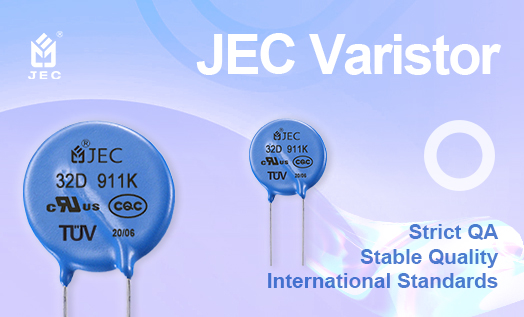Varistor is a type of voltage-limiting protective device. By utilizing the nonlinear characteristics of the varistor, when an overvoltage occurs across the two poles of the varistor, it clamps the voltage to a relatively fixed value, thereby providing protection to the subsequent circuit.
Reasons for the easy burnout of varistors:
Excessive or low working temperatures in the surrounding environment:
A common issue is that varistors can be damaged if exposed to excessively high or low temperatures.
Number of overvoltage protection instances:
High-quality varistors can withstand a relatively greater number of overvoltage protection instances, while lower-quality ones may have limited protective capabilities.
Short burn-in time, small silver plating, and poor quality of the chip:
The quality of a varistor depends on the internal chip quality. Normally, the chip should undergo a burn-in time of 28 hours, but some inferior chips, in an effort to save power and cost, may only undergo a 12-hour burn-in. Substituting small chips for larger ones is also a common trick used in inferior varistors.
Due to the expensive price of silver, the silver plating on low-quality varistors is becoming smaller, and the silver content is insufficient. Some manufacturers have started using copper as a substitute for silver. If such inferior varistor chips are used, the varistor is indeed more prone to damage.
This article is provided by JYH HSU (JEC) Electronics. JEC is a research, development, production, and sales-oriented company specializing in manufacturing and selling various electronic components such as capacitors and resistors.
Post time: Jan-02-2024

